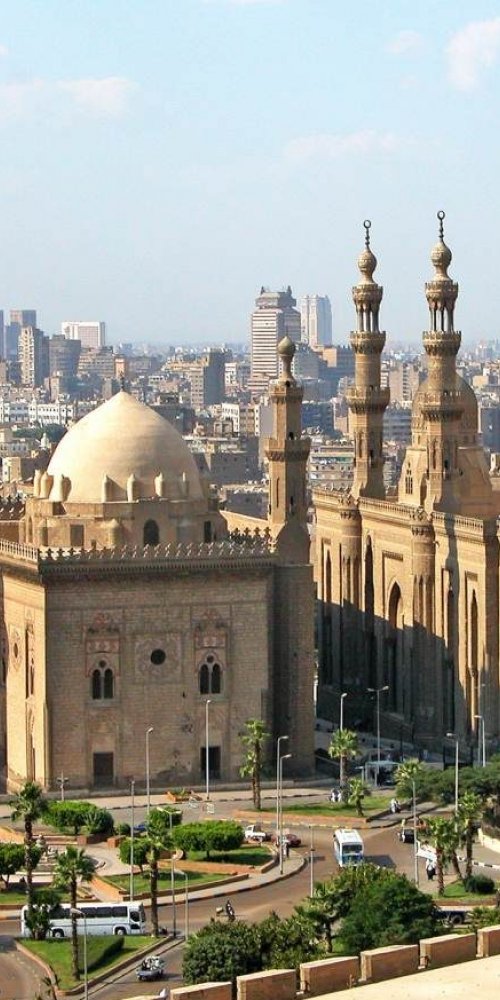

Imagine standing amid Cairo’s vibrant streets as the sharp beep of ticket barriers cuts through the morning air. Trams ring their bells, weaving steadily alongside bakeries exuding the scent of fresh bread. Above the din, conversations swirl in Arabic, English, French, Amharic, and more - reflecting the city’s rich tapestry of culture and commerce. Buses pull away, passengers chatting eagerly, while ferry operators shout their destinations over the Nile's gentle hum. This symphony of sound and motion overlays the ancient cityscape, where the modern pulse of public transport connects every corner, every story.

When you first step into Cairo, you’ll quickly appreciate the city’s roar and rhythm. Public transport isn't just a way to get around - it’s your key to experiencing local life up close. Metro Cairo, EG, is a fast, affordable way to traverse the city’s crowded neighbourhoods, often slicing travel time compared to taxi rides stuck in traffic.
Cost-wise, you’ll find fares remarkably cheap. A single metro ride ranges just a few Egyptian pounds, ideal when budgets matter. Plus, with ample bus and tram alternatives, public transport minimizes the need for costly private hires.
Environmentally, choosing metro or tram supports Cairo’s efforts to reduce surface congestion and carbon emissions. Trams glide quietly, while the electric-powered metro hums cleanly beneath the city. When walking past congested roads, it’s clear that using these systems benefits both your wallet and Cairo’s smog-ridden skyline.
Besides speed, public transport connects you to vibrant districts like Zamalek and historic Islamic Cairo with ease, all while blending into the local buzz. That first time I hopped a ferry across the Nile to see the Citadel, I knew public transport was my best ally for authentic adventures.
| Mode | Lines | Peak Frequency | Night Service |
|---|---|---|---|
| Metro | 3 | 3–7 min | Limited (Fri-Sat only, midnight–2 AM) |
| Tram | 4 | 15–20 min | No |
| Bus | 100+ | 10–30 min | Some night routes |
| Ferry | 3 | 20 min | No |
| Bike-share | Many docking stations central | On demand | N/A |
The metro’s three lines form Cairo’s transit backbone, with swift service connecting suburbs and downtown. Trams remain popular in select districts, offering scenic rides near the Nile with fixed stops. Buses boast myriad routes, often congested but expansive, crucial for areas beyond metro reach. Ferries provide unique Nile crossings, avoiding road traffic snarls. For short trips, local bike-sharing adds flexibility. Together, these modes provide a multi-layered network for navigating Cairo’s sprawling urban maze.
Peak hours in Cairo cluster around morning (7–9 AM) and evening (5–7 PM) work commutes. During these times, expect metro carriages and buses crowded, with standing room only. Avoid rush if you can; travelling just outside these windows offers quieter, more comfortable rides.
During peak, validate tickets diligently - inspectors increase presence, especially on buses. Penalties are steep for evading fares.
Off-peak hours offer a chance to see the city unfold without the crush of commuters. Trams at midday glide quieter than at rush hour, with excellent photo opportunities along the Nile.
Weekends and holidays present a mixed crowd – tourists may boost vehicle occupancy mid-mornings, but evenings tend to ease.

Metro stations are progressively being fitted with ramps and elevators, yet some older stations remain challenging. Many tram stops lack full accessibility, so plan accordingly. Wheelchair users should verify station facilities via official websites or local aid groups.
Spaces aboard metro trains accommodate prams, though manoeuvring at busy times requires care. Buses vary widely; some allow prams, while older models can be cramped. Fold prams when boarding ferries due to limited space.
Travelling with airport bags is easiest via metro line 3 connecting the airport terminal. Station elevators assist in avoiding stairs. Avoid buses during rush hours to keep your luggage secure and within sight.
Bus tickets are typically purchased on board with cash, either directly from the driver or a conductor. More recently, some bus routes accept contactless cards, but carrying some cash is advisable.
While night service is limited to weekends on metro lines, areas around stations remain busy and policed. Use well-lit exits and avoid isolated carriages for safety.
The 24-hour and 72-hour unlimited-ride passes provide excellent value and convenience, especially if you plan multiple trips across metro, bus, and tram.
Tram routes are straightforward but signage may lack English in minor stops. Prepare with printed or app-based maps to navigate smoothly.
With a little preparation, using public transport in Cairo, EG, transforms from daunting to delightful. Whether zipping along the metro, cruising trams by the Nile, or bargaining at bustling bus stops, you’ll uncover the city’s heartbeat from the inside out. Share your stories and questions in the comments! Don’t forget to sign up for our newsletter for the latest transit tips and local secrets.

Additional articles from our network with useful insights about Cairo.